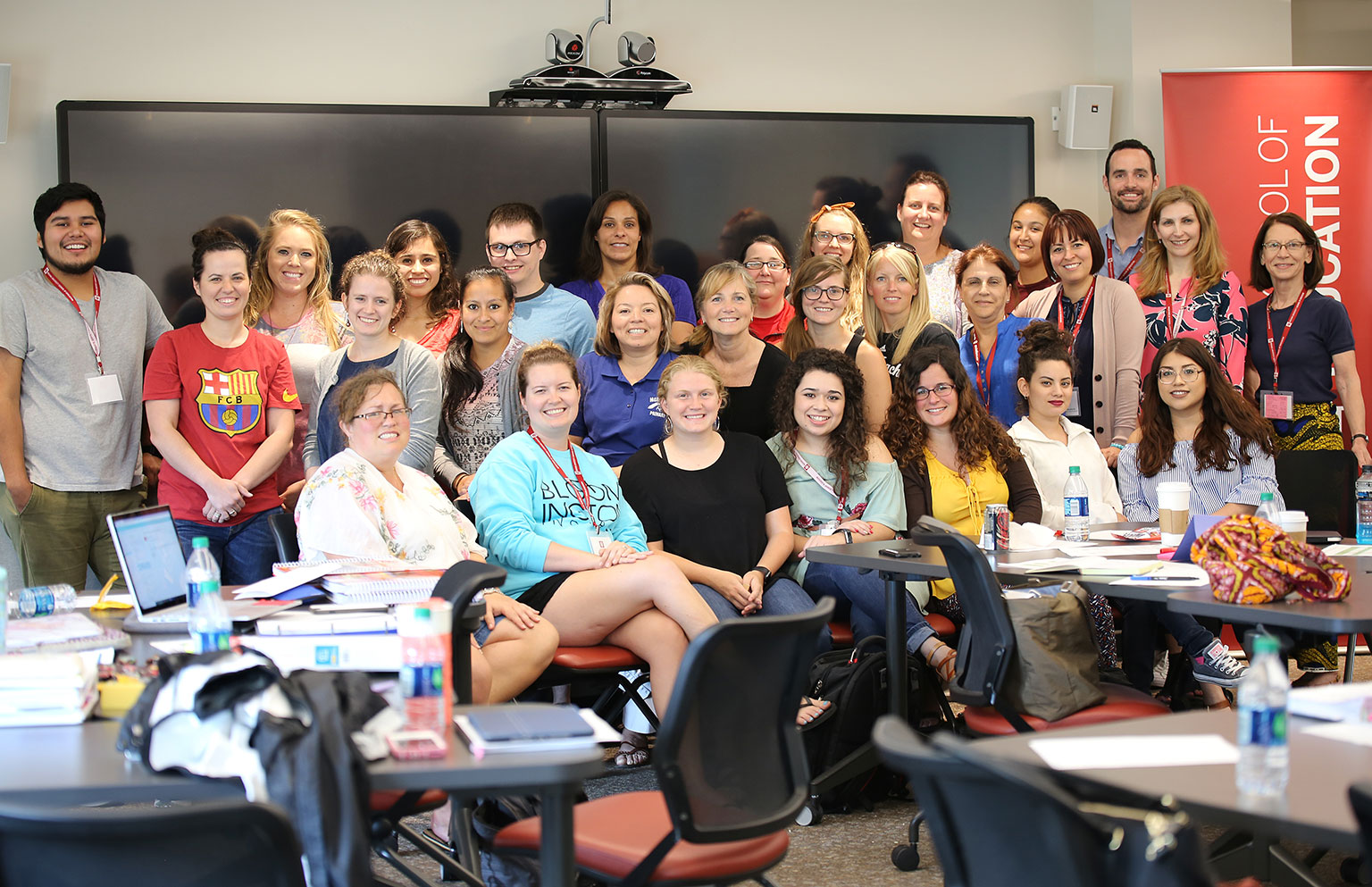Teachers and administrators gathered at IU in June for the Dual Language Immersion summer institute, a program meant to support them as they implement DLI programs in their schools. Dual language curriculum includes instructing students in two languages with at least fifty percent of the class time being spent in the partner language. Dual language students develop high language ability in both of their program’s languages, with many students reaching a near-native level of proficiency in the target language. Students in these programs consistently perform at or above grade level on standardized tests.
“The number of DLI programs have been growing as they have been proven as models that help close the achievement gap of the students in these programs, as well as help students become bilingual, biliterate, and bicultural,” said Vesna Dimitrieska, Director of Global Education Initiatives for the Center for P-16 Research and Collaboration. “In additional to the cognitive benefits associated with being bilingual, by becoming proficient in another language, and becoming culturally proficient, learners are becoming more globally- minded and global ready.”
Participants spent the week in the summer institute discussing DLI pedagogy, classroom activities, assessment, teacher recruitment, plans for sustainability and growth, tips for securing external funding, and other topics critical for DLI pilot program success and growth.
P-16 hosted the week-long institute, along with the Title VI Centers at IU (Center for the Study of Middle East, East Asian Studies Center, Inner Asian and Uralic National Resource Center and Russian and East European Institute).
“Dual language immersion programs are very important as they help address the needs of the local population (especially the two-way programs), as well as help prepare individuals that will be able to make the connections between the local and the global,” Dimitrieska added.


